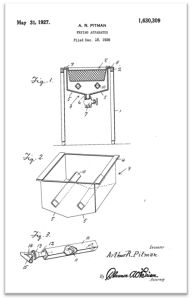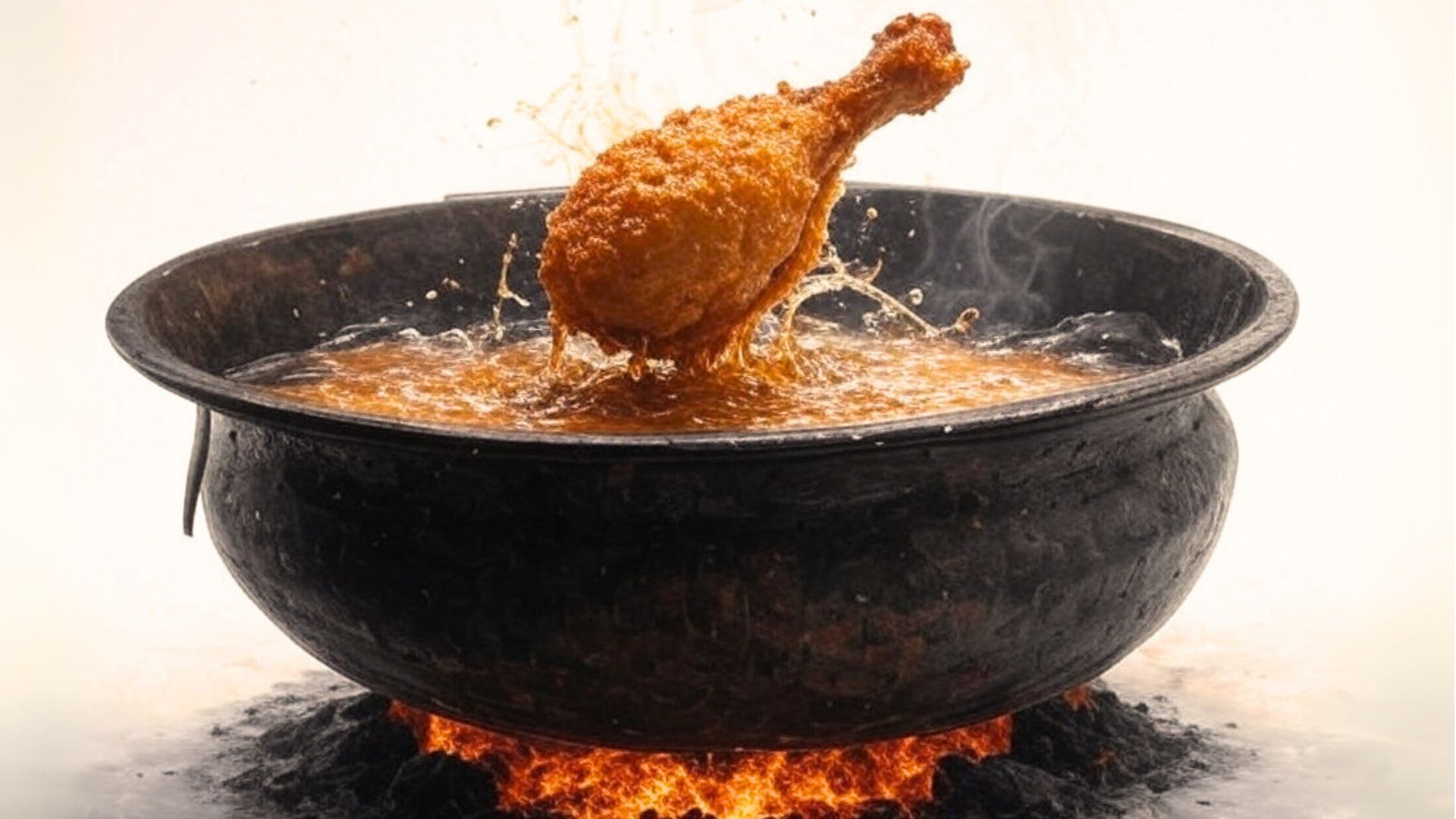Ancient Sparks:

Cooking with scalding oil was around long before fries were even a twinkle in McDonald’s eye. Let’s take a trip down memory lane.
- Around 2500 BC, cooks in ancient Egypt were plunging dough into clay pots over open flames with sizzling oil, hitting temperatures upwards of 300°F and crisping treats faster than a pharaoh could take a new wife.
- By 2000 BC folks in China were blistering fish in bronze pans with sesame oil at temperatures of 320°F.
- Skip ahead to the 1st century and the Romans were frying fish in shallow pans.
- Then in the 5th century Grecians were frying dough in olive oil over smokeless fires – think early pancakes – hitting temperatures of 350°F.
- Fun fact: Archaeologists uncovered oil-fried cakes in tombs from the Han Dynasty in 206 BC. A crispy time capsule for sure!
These ancient methods kicked off a hot oil legacy—bold, tasty, and a bit wild. And while burns were common due to the lack of safety gear – just a stick to dodge wayward splashes – the flavor kept people hooked.
The Fryer’s Dawn: A 19th-Century Leap

It wasn’t until the 1900s that cooking with hot oil got a serious upgrade. In 1918 J.C. Pitman patented an “apparatus for frying articles of food” which appeared to be the first equipment specifically designed for frying food in hot oil.
Pitman’s fryer wasn’t just about taste, it reduced the risks of burns from splashing hot oil, a nod to safety before it had a name. The Occupational Safety and Health Administration (OSHA) didn’t exist yet, and this was a step towards keeping operators safe for safety’s sake. Fryers were born, and fries started their global takeover.
20th-Century Heat
Following Pitman’s invention, fryers began hitting their stride. Kitchens moved from open vats to enclosed models with baskets, keeping oil at 375°F and reducing burn risks. These early safety considerations were ahead of the curve. The National Institute for Occupational Safety and Health (NIOSH) would later flagged hot oil as a top hazard (2018). Then, in 1970, OSHA rolled in with the Occupational Safety and Health Act, pushing for hazard-free workplaces via the General Duty Clause. Contained oil meant fewer accidents and happier crews while serving up tasty, crispy treats. The sizzle was officially a bit safer.
Safety’s Sizzle

Today, just as cooking with hot oil has evolved, so has protection for those using it. OSHA’s General Duty Clause keeps workplace hazards in check, while NIOSH pushes training to cut risks. The Bureau of Labor Statistics logged 5,030 nonfatal burn injuries in food service in 2023, a lower number from past years thanks to fryer upgrades and smarter protective gear. But there is still more work to be done to reduce these injuries and their associated costs. A report by AmTrust Financial Services analyzed nearly 130,000 workers’ compensation claims from 2018 to 2023 and found that burns and scalds from hot surfaces and oil were the second most common injuries, with an average claim cost of $4,326.
You can combat these risks and their associated costs by improving employee awareness and training materials and by providing best-in-class personal protective gear. At CrewSafe we offer heat-resistant gloves, specialty aprons and first-of-its-kind face shields. We also produce eye-catching, effective employee training materials and programs. Contact us today to find out more! History shows if you master safety with the right tools, you master the game.
Sources
British Museum. (2020). Cook a classical feast: Nine recipes from ancient Greece and Rome. Greek frying of dough by 5th century BCE and Roman fish frying by 1st century CE. https://www.britishmuseum.org/blog/cook-classical-feast-nine-recipes-ancient-greece-and-rome
Bureau of Labor Statistics (BLS). (2024). Survey of Occupational Injuries and Illnesses, 2023. Reported 5,030 nonfatal burn injuries in food service for 2023. https://www.bls.gov/iif/nonfatal-injuries-and-illnesses-tables.htm
Chinese Food History – Travel Guide China. Chinese fish frying by 2000 BCE. https://www.travelchinaguide.com/chinese-food-history.htm?srsltid=AfmBOor_H5sEeqLTT9L7bqbyYGiKc3Le9uvf8zgxF2dlO8uBd5G09_-h
Flavor & Fortune. Han Dynasty Foods. https://www.flavorandfortune.com/ffdataaccess/article.php?ID=542
Mark, J. J. (2017). Food in ancient Egypt. World History Encyclopedia. Egyptian dough frying in clay pots around 2500 BCE. https://www.worldhistory.org/article/1032/food-in-ancient-egypt/
National Geographic. (2025). Are French fries truly French? Belgian villagers frying potatoes by late 17th century (circa 1680s). https://www.nationalgeographic.com/culture/article/are-french-fries-truly-french/
National Institute for Occupational Safety and Health (NIOSH). (2018). Criteria for a recommended standard: Occupational exposure to heat and hot environments. Heat hazard training recommendations, pp. 12-15. https://www.cdc.gov/niosh/docs/2016-106/pdfs/2016-106.pdf
Study of 130K Claims Finds Back Injuries Were The Restaurant Industry’s Most Expensive. https://www.claimsjournal.com/news/national/2024/11/06/327174.htm
Occupational Safety and Health Administration (OSHA). (n.d.). Fire safety – Overview. OSHA regulations and safety context. https://www.osha.gov/fire-safety
Occupational Safety and Health Act of 1970, 29 U.S.C. § 654(a)(1). OSHA’s General Duty Clause. https://www.osha.gov/laws-regs/
Pitman, A.R. (1926). Frying Apparatus. U.S. Patent No. 1,630,309A. https://patents.google.com/patent/US1630309A/en?oq=1%2c630%2c309%2f

